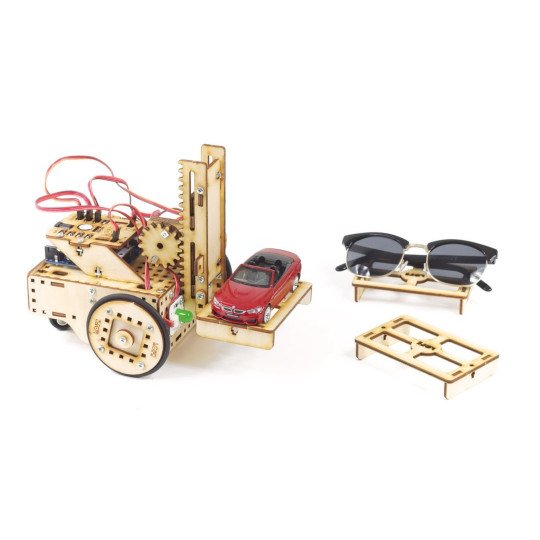
We further reflect on our learning from a one-year long iterative design process and contribute a social scaffolding based procedure to engage children with such constructionist toolkits effectively. In this paper, we show how, owing to its unique form-factor, the toolkit enables multi-user constructions for the children and offers a shared learning experience. The smartphone recognizes our hemispherical modules omnidirectionally through novel computer vision based 3D patterns custom made to provide logical as well as semantic encoding.

The modules are enabled for wireless communication and can be linked together using an Augmented Reality based programming interface running on a smartphone. The toolkit comprises of dome-shaped (D) tangible modules with various attachments that allow suspension on the body of multiple children and/or in the environment to support a variety of sensing/input (I), actuation/output (O) functionalities. We present the design and implementation of DIO, a novel digital-physical construction toolkit to enable constructionist learning for children from age group 8-12 years. Box is very small, has no front display other then a basic blue Power display and a white N/W display to show its on and the networks working. To the authors’ knowledge, this is the first systematic review specific to TUIs’ studies in early years’ education and is an asset to the scientific community. This review also identifies gaps in the current work, thus providing suggestions for future research in TUIs application in educational context expected to be beneficial for researchers, curriculum designers and practitioners in early years’ education. There are more than 25 alternatives to CoderNotes.io for a variety of platforms, including Online / Web-based, Mac, Windows, Linux and Self-Hosted solutions. The results indicate that (i) the form of tangible object is closely related to the application domain, (ii) the manipulatives are the most dominant form of tangible object, (iii) the majority of studies addressed all three stages of TUI development (design, implementation and evaluation) and declared a small sample of young children as a major shortcoming, and (iv) additional empirical research is required to collect evidence that TUIs are truly beneficial for children’s acquisition of knowledge. The provided workshop link takes you to the relevant YouTube video, which tells you where to find the associated DartPad link.


Some codelabs run in DartPadno downloads required Flutter workshops are similar to the codelabs, but are instructor led and always use DartPad. The review was based on a set of clear research questions addressing application domains, forms of tangible objects, TUI design and assessment. Get insights on CODEBox Infotech reviews, salaries, interviews, leadership, benefits. The Flutter codelabs provide a guided, hands-on coding experience. This paper presents a systematic review of the literature on Tangible User Interfaces (TUIs) and interactions in young children’s education by identifying 155 studies published between 20.


 0 kommentar(er)
0 kommentar(er)
